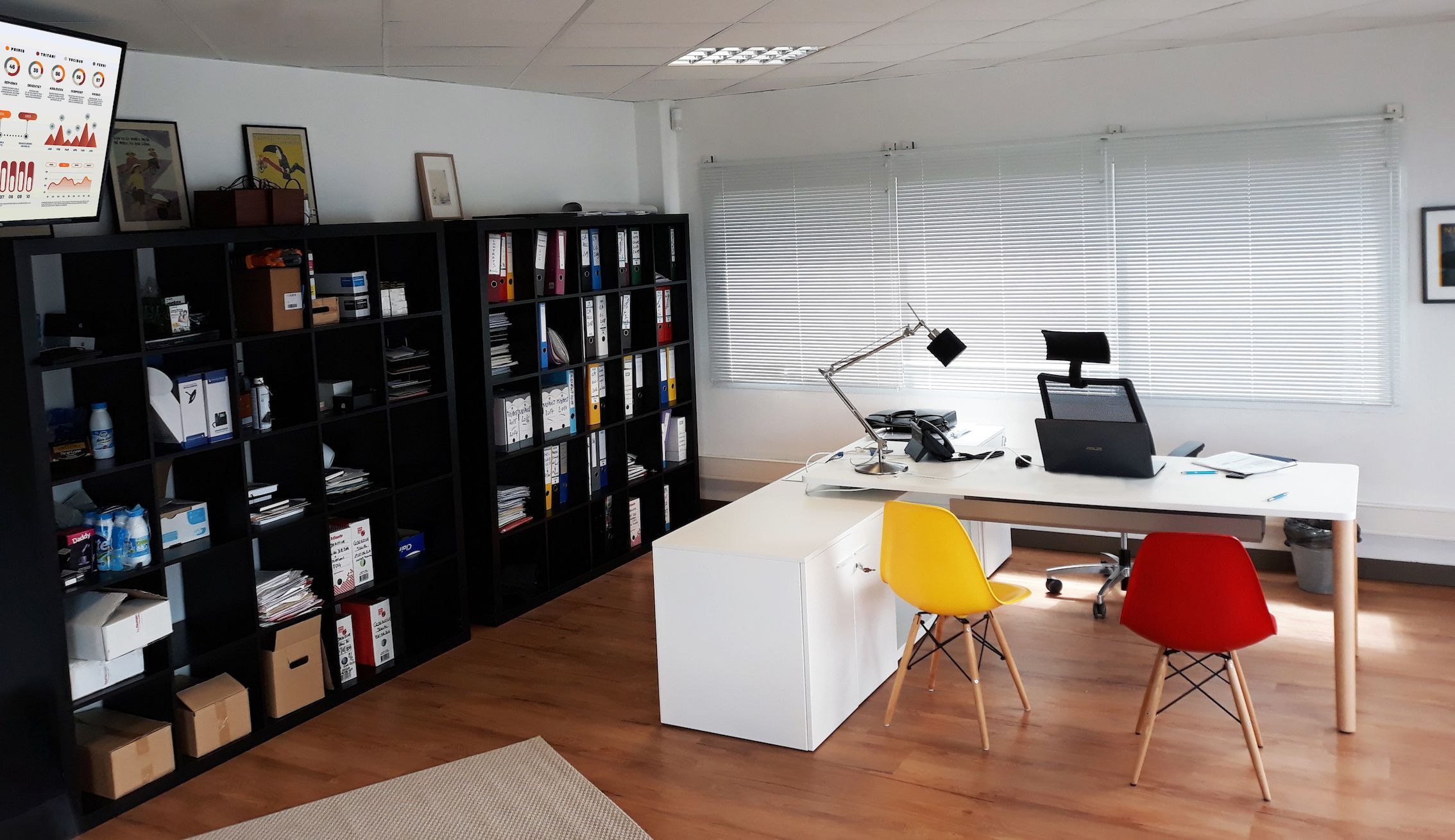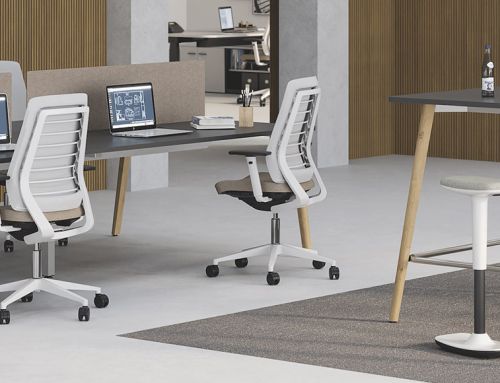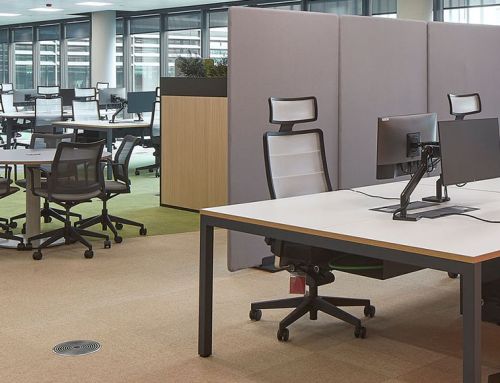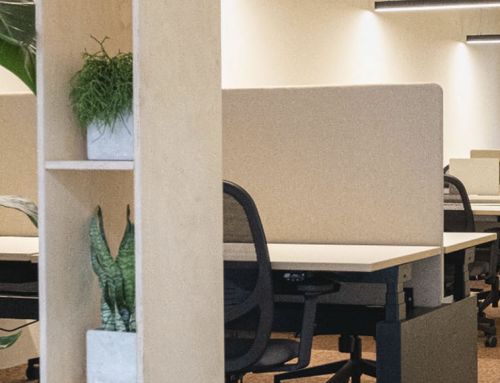Keys to care for our back while teleworking
Teleworking: “Sixty per cent of backaches related to sedentary work have to do with a bad chair”
According to the study “Ergonomics and health in office environments” by Ofita nearly 50% of employees complain of backaches (80% have suffered a backache event at some stage of their lives), 17% of muscular ache in arms and legs and 45% declares working in painful or fatigue-causing positions.
Twenty four per cent of respondents outstand that the neck-shoulders area is the most affected. “These figures deserve a reflection, especially because they can be avoided as they have to do with the design of the work space” says Martín López, Sales Director of Ofita. In his opinion, it will increase with teleworking because “equipment at home is not the most suitable to remain seated at a desk for the whole working day”.
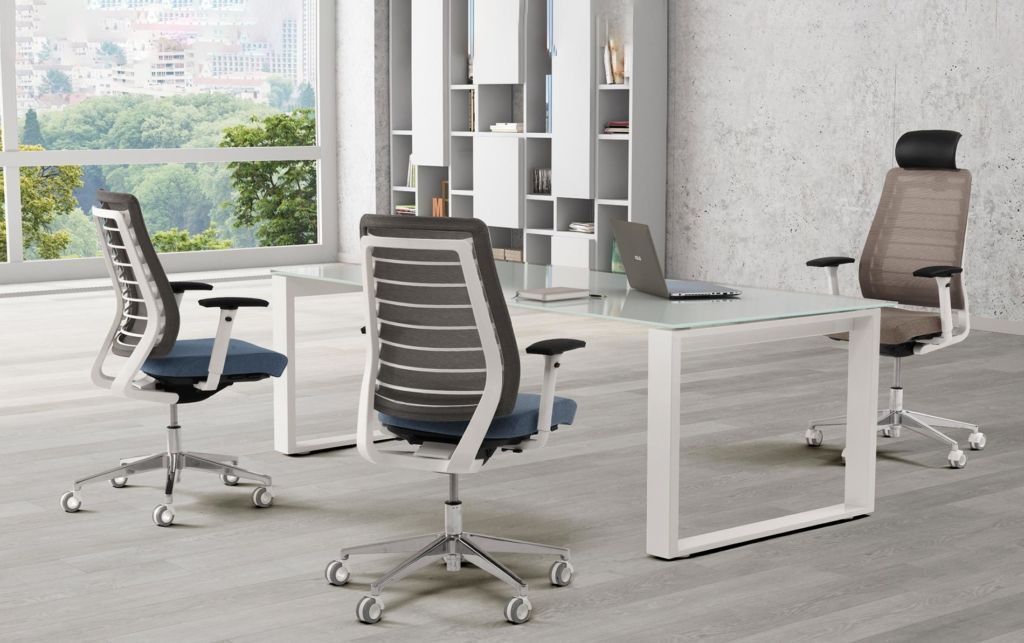
Hara chairs
“Sixty per cent of diseases related to sedentary work have their origin in the wrong choice of the chair”, declares Martín López. For a chair to be healthy and avoid causing these problems, its design has to respond to ergonomic criteria and not only to those purely aesthetic, the user finding in its seat the support its needs to maintain a correct and healthy position.
“An ergonomic chair prevents pains and diseases and also produces healthy psychologic conditions: attains greater efficiency in the development of work, reduces fatigue and increases the general wellbeing of its user and its motivation at work”.
According to the abovementioned study by Ofita, the greater amount of complaints is observed regarding the availability of armrests. Secondly (in order of frequency of complaints), the comfort of the backrest. “Over 30% of office chair users assert that they do not use the backrest of the chair because they are uncomfortable”.
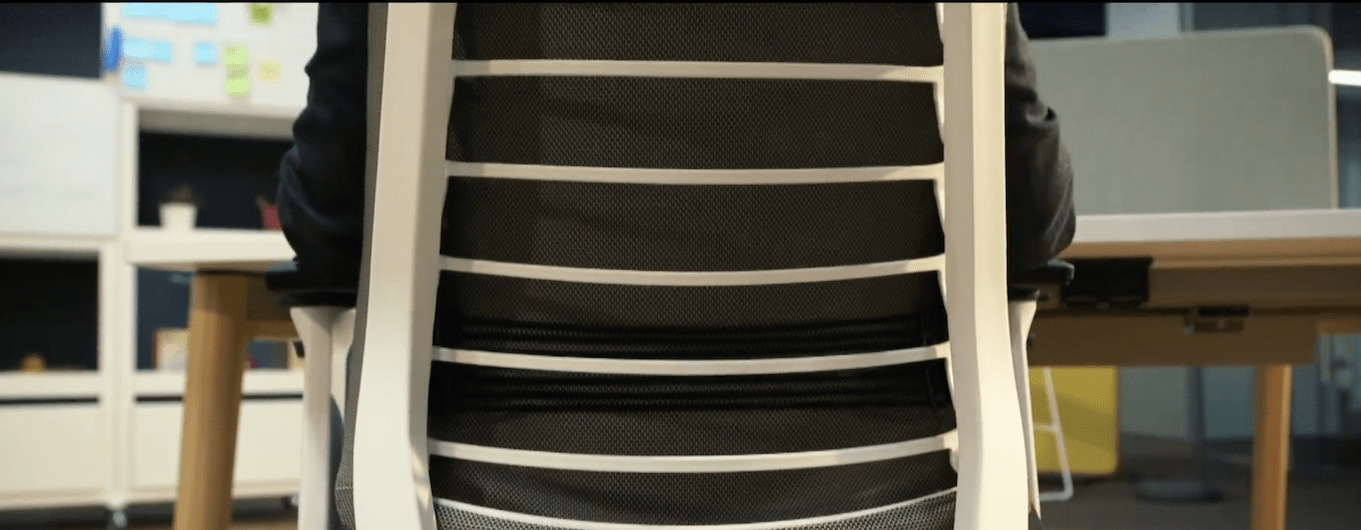
Teleworking – How to care for our back
“It is very important also, says the Sales Director of Ofita, to change static positions for others seated but in active movement. Therefore, the backrest of the chair cannot be too stiff. It has to allow certain flexibility moving in small angles in a fix position.
Secondly, it is very important no to remain seated in the same position for too long. We have to change position frequently and also try to combine working seated and standing. Therefore adjustable height tables are ideal.
Ergonomic requirements for a healthy table
The first thing we have to ask for in the case of office chairs, according to Ofita, is that they are designed according to ergonomic criteria which means that has to be capable of adapting to the physical constitution of its user and to the activity developed which will allow adopting a correct position at all times.
Therefore the ergonomic and healthy chair has to meet the following requirements:
- The chair has to adapt to its user; to the variety of individuals. Therefore it will have to be fitted with: turns, mobility, seat-height regulation (feet have to totally rest on the floor), regulation of height of the backrest (to allow a correct lumbar support) and height regulation of armrests. The regulation of the depth of the seat can also be important for people too tall or too short.
- The backrest has to allow the back to rest correctly. The backrest has to favour the adoption of a right position providing support to the trunk as a whole and in particular it is especially important to provide support to the lumbar area. On the other hand, the back shall not be too broad in its upper part to avoid reducing mobility of the arms. It also has to have certain curvature, seen laterally to adapt to the form of the back. With the shape of a soft S at the thoracic area and convex at the lumbar area to adapt to the structure of the back. Likewise, we recommend the possibility of regulating the height of the backrest or otherwise, the regulation of the furthest side of the lumbar curvature of the backrest.
- The chair has to be safe. Office chairs have to swivel and their seats have to be fitted with 5 radios to avoid shifting compared to the former four-legged ones. The chair’s centre of gravity plus that of the user shall not be left outside the surface of the basis in none of the “limit” positions the user may adopt; from the seating position on the forward edge of the seat, with the body leaning forth, to the position of maximum inclination to the back of the backrest.
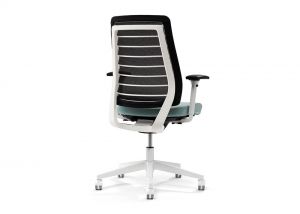
Silla Hara de Ofita
- The chair has to favour a dynamic seating position. The chair shall adapt to the user’s movements and to the different activities. In this sense, we recommend systems allowing the synchronization of seat/backrest movements.
- Armrests are suitable to support and relax elbows and forearms. An appropriate arm support will reduce the feeling of fatigue around the cervical area. Its length has to be slightly shorter than that of the seat to favour the approach of the chair to the table. They also have to be thick and shall avoid sharp edges.
- Seats shall not be too soft. Seats shall not be too soft; it is important not to confuse comfort and convenience with ergonomics. The seat has to be squashy but also provide firm support to the whole surface.
- Design that damps the impact when seating.
“And very important: Not to use the chair as received; adjust all its settings to each of us”, says the Sales Director of Ofita.
Seat properly to feel good – Which is the correct position?
Ofita reminds us that the correct position to work seating on an office chair is:
– With the back straight as this way it presents its natural open S-shape. On the other hand, the curved position is harmful because we force the column and ligaments irregularly. Likewise muscles work incorrectly. Shoulders fall front in this position and arms hang in front of the body and are twisted inwards. This incorrect position also places the head abnormally forward. Therefore, the trunk shall be straight rest on the backrest of the chair.
– A position as stable as possible; this means that the user does not collapse on its seat.
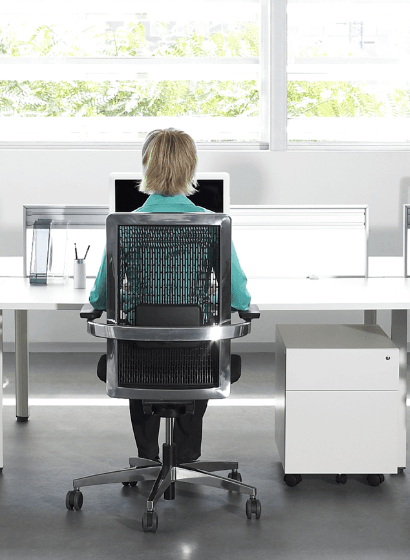 – On the other hand, most activities developed daily while seating at the office, like for example, hand writing or typing require the arms to be twisted inwards. Nevertheless, to enable the adoption of the straight body position, arms should be more frequently outwards. Also it is very important to rest them on the chair (on their armrests) or on the table.
– On the other hand, most activities developed daily while seating at the office, like for example, hand writing or typing require the arms to be twisted inwards. Nevertheless, to enable the adoption of the straight body position, arms should be more frequently outwards. Also it is very important to rest them on the chair (on their armrests) or on the table.
– Also the position of the legs has great influence on the body position. While seating we should have our legs slightly open and both feet stepping totally on the ground; this means that it is harmful to cross your legs one over the other one and maintain this position.
– Knees have to form a 90 degree angle with the muscles.
– The foot has to form a 90 degree angle approximately with the lower leg.
– The lower leg has to form a 90 degree angle with the thigh.
– The horizontal thigh.
– The thigh forms a 90º angle with the trunk.
– Hands: Wrists have to be extended rather than bending upwards or downwards; if you use wrist rests do not use them while typing; hands have to move through the keyboard rather than remain still.; while typing, hands and fingers have to be relaxed; the mouse near the keyboard; the keyboard has to be placed so that arms are relaxed and forearms are practically in a horizontal position.
Careful with the phone: Fifty per cent of people using computers and phones at the same time suffer neck aches caused by holding the phone between the head and the shoulders to have free hands. This problem is known as “operator’s neck”.
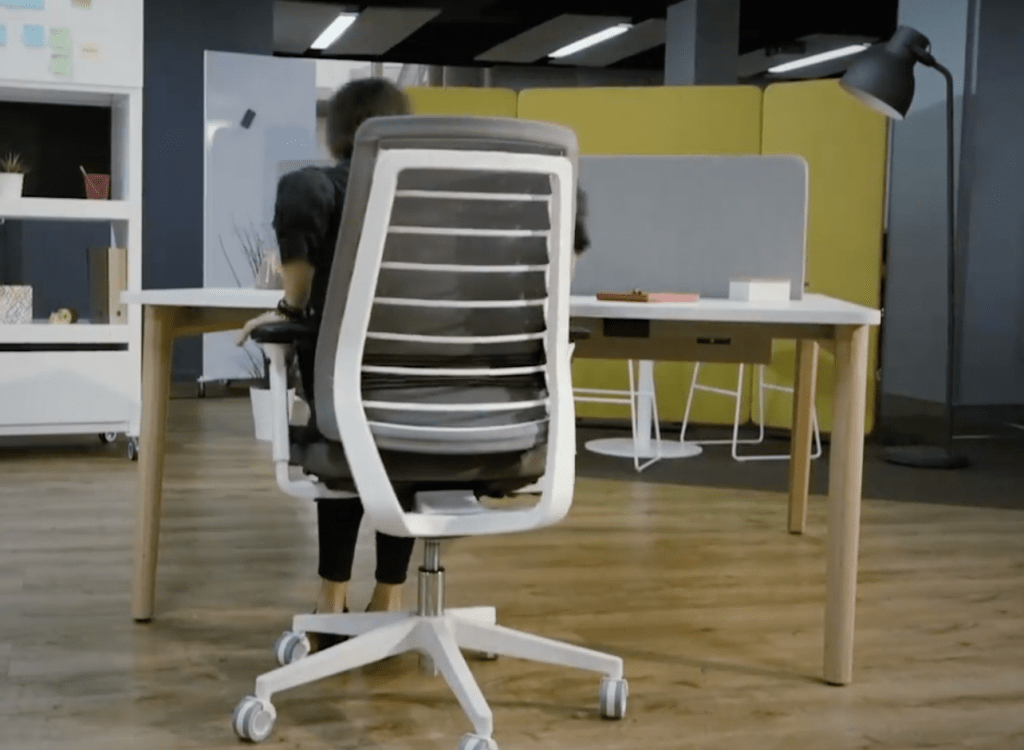
And although it is essential to keep an appropriate position while seated it is also important to take care when seating and standing from the chair. “Seat controllably; do not collapse. While seated, rest your arms on the armrests or on your thighs holding the back upright and seat as back as possible on the chair, resting your back on the backrest.
To seat up, use your arms and rest them firmly on the armrests or (if the chair does not have this element), rest them on your thighs or knees and in any case, hold the back upright or slightly arched, not bent while you seat up.
“Remember also that when seated we have to avoid partial twists. The correct thing is to turn the whole body at the same time” reminds Martín López.
